If you have ever thought about some of the most power-hungry appliances at home, you have probably included washing machines and dryers in your list. On average, a washer consumes 400-550 watts per load, and homeowners are switching to solar-powered washing machines to reduce their bills.
While smaller models may consume nearly 400 watts, an advanced model can run as high as 1500 watts per load. Due to the high electricity requirements of washers and dryers, many people are looking for a cost-effective solution. A solar-powered washing machine is designed to work on solar energy. Different Jackery Solar Generators are capable of powering small and large washers.
In this Jackery guide, we will cover everything you need to know about solar-powered washers and how to power them.
What Is A Solar Powered Washing Machine?
Solar technology is taking the world by storm. Many homeowners have been powering their appliances using clean and renewable energy. From refrigerators, TV, and electric heaters to washing machines, solar power can charge small and large devices quickly.
A typical solar power system for washing machines consists of solar panels. Other parts like a charge controller, an inverter, and a battery for storage are optional. A solar panel system may or may not incorporate batteries. Solar panels connected in series or parallel can charge washing machines during the daytime.

You can connect a solar generator and a battery bank with solar panels to ensure you have power when the sun is unavailable. The battery stores power during the daytime and supplies it whenever required.
Solar Powered Washing Machine Vs. Solar Generator For Washing Machine
Going off the grid and powering appliances with solar is much easier than you think. There are two options to power washing machines using solar energy: a solar-powered washing machine or a solar generator for washing machines.
While a solar-powered washing machine means charging appliances using solar panels, a solar generator combines solar power panels, an inverter, a charge controller, and a battery.
Even though solar washing machines are suitable for leveraging the power of solar energy, they may not work during cloudy days or at night. That's why it's recommended to invest in a portable solar generator. The best part about solar generators is that they have multiple input and output ports, allowing you to power various appliances simultaneously.
|
Types |
Features |
Pros |
Cons |
|
Solar Powered Washing Machine |
- Portable and lightweight - Easy to install - Does not require electricity |
- Easy to carry on off-grid trips - Uses clean and renewable energy - Affordable compared to traditional machines |
- Charge slow - May not work during cloudy days or at night - Does not provide stable power when sunlight is not available |
|
Solar Generator for Washing Machine |
- Suitable for all types of outdoor appliances - Provides stable and unlimited energy - Can be recharged using solar panels, carport, and wall outlets - Combines a power station and solar panels |
- No installation - No maintenance required - Multiple charging methods available - Can work efficiently during cloudy days or at night - Clean energy source that does emit toxic fumes |
- Some high-capacity solar generators cost higher |
Solar Powered Washing Machine
A solar washing machine features built-in solar panels to convert sunlight into usable electricity. While two or three solar panels are enough to power small-size machines, you will need more than six solar panels to charge large-size dryers.
Pros
- Unlike traditional machines, solar-powered washing machines are eco-friendly and do not require any electricity to run.
- It is ideal for those who desire to live off the grid and save on electricity bills.
- Solar power machines are portable and suitable for RV trips or other outdoor adventures.
Cons
- Solar-powered washing machinesare more expensive compared to traditional machines.
- They require regular cleaning to ensure the solar panels are free of dirt and debris.
- Solar washers are a bit slower than conventional machines and may not work efficiently when there is unstable sunlight available.
- Off-grid cloth washers powered by solar panels cannot produce electricity when sunlight is unavailable or on cloudy days.
Solar Generator For Washing Machine
Unlike solar-powered washing machines, which work only when the sun is available, a solar generator combines solar panels with a power station. The battery attached to the solar panels enables you to store the generated power for later use.

Jackery Solar Generators feature multiple output ports allowing you to charge home appliances like a mini fridge, washer, coffee maker, TV, and much more. Depending on your power needs, you can select the right size and capacity of the generator.
The high-quality material used in the manufacturing of solar generators ensures you get a stable power supply to charge all types of appliances.
Pros
- Solar generators are portable and lightweight, making them suitable for outdoor activities.
- A solar generator has no moving parts, so it works without emitting any noise.
- High-quality solar panels and power stations require zero maintenance.
- The sun-powered generators feature a plug-and-play function, making them easy to use.
- Unlike solar-powered washers and dryers,a solar generator can work at night or on cloudy days due to the battery storage solution.
How Many Watts Does A Washing Machine Use?
Wattage is the overall rate of electricity consumption, while watt-hours denote the electricity consumed by the appliance over time. The electric bill measures the energy in kilowatt-hours (kWh), which is equivalent to 1000 watt-hours.
On average, the solar-powered washing machine uses 850 watts. Of course, the actual watt consumption will depend on various factors like size, brand, and model. You can generally find the exact wattage on the device or user manual.
A+++ rated washing machine consumes nearly 300-500 watt-hours of power. As the normal cycle of the washing machine will last about 30 minutes, it generally consumes 150-250 watt-hours. Other washing machines can use more than 1000 watts, depending on their size and capacity.
How Much Does It Cost To Power A Washing Machine?
The exact cost to power a solar washing machine will depend on different factors, including solar panel price and the efficiency of the washing machine. Solar panels generally cost somewhere between $1 to $1.50 per watt. That said, you will have to pay around $0.36 in electricity to run a washing machine for one hour.
As washers and dryers use a lot of power while working, they are some of the most intensive appliances in a home. For example, you will generally require 6 to 10 solar panels of 300 watts to power a dryer that utilizes 2000-4000 watts per hour.
On the other hand, a solar generator for an off-grid clothes washer is a cost-effective solution for high-power-consuming appliances. With a high-battery capacity and fewer solar panels, you can charge all devices for long hours. Hence, buying a solar generator is more affordable than an extensive solar panel system.
|
Washing Machine Wattage |
Days Per Week Run |
Yearly kWh Of Electricity |
|
400W |
3 |
62.4 kWh |
|
500W |
3 |
78 kWh |
|
600W |
3 |
93.6 kWh |
|
700W |
3 |
109.2 kWh |
|
800W |
3 |
124.8 kWh |
|
900W |
3 |
140.4 kWh |
|
1000W |
3 |
156 kWh |
|
1100W |
3 |
171.6 kWh |
|
1200W |
3 |
187.2 kWh |
|
1300W |
3 |
202.8 kWh |
|
1400W |
3 |
218.4 kWh |
How Much Solar Power Does A Washing Machine Use?
The power requirement of a solar-powered washer and dryer will depend on the wattage consumed and operation time. For instance, if you use a small washing machine that consumes 500 watts of power for 1 hour, the solar energy needed will be 500*1 = 500 watt-hour. Below we reveal the solar power needs of different washing machine sizes.
|
Washing Machines |
Wattage |
Length of Time |
Solar Power Needed |
|
Small Size |
400W-600W |
1H |
400-600Wh |
|
Medium Size |
600W-800W |
45 Min |
450-600Wh |
|
Large Size |
800W-1400W |
30 Min |
400-700Wh |
Jackery Solar Generator For Washing Machine
Investing in a solar generator for washing machines has multiple benefits compared to solar-powered washing machines. A solar washer works slowly and has low capacity, whereas a solar generator provides a continuous power supply to traditional washing machines.
Jackery is the top-selling solar generator brand offering high-quality solar panels and power banks to customers. For example, you can choose Jackery Solar Generator 1000 Plus to power a small-size washing machine, whereas Jackery Solar Generator 1000 v2, with a battery capacity of 1070Wh, is ideal for charging portable washing machines on the go.

If you want to power 99% of most home appliances, you can choose an ultra-power expandable solution – Jackery Solar Generator 2000 Plus with a battery capacity of 2042.8Wh. One important thing to note is that if your washing machine operates at 120V, you can go ahead with Jackery Solar Generator 1000 Plus or Jackery Solar Generator 2000 Plus. However, if you have large washers and dryers operating at 240V, you will need a Jackery Explorer 2000 Plus Double Kit Portable Power Station having a capacity of 4085.6Wh.
|
Series |
Capacity |
Ports |
Washing Machine Watts |
Working Hours |
|
Jackery Solar Generator 1000 v2 |
1070Wh |
AC Output (x3): 120V ~ 60Hz USB-A Output (x1): 18W Max 5-6V⎓3A, 6-9V⎓2A, 9-12V⎓1.5A Car Port (x1): 12V⎓10A USB-C1 Output: 30W Max 5V⎓3A, 9V⎓3A, 12V⎓2.5A, 15V⎓2A, 20V⎓1.5A USB-C2 Output: 100W Max 5V⎓3A, 9V⎓3A, 12V⎓3A, 15V⎓3A, 20V⎓5A |
Small Washing Machine: 400W-600W Medium Washing Machine: 600W-800W Large Washing Machine: 800W-900W |
Small Washing Machine: 1.5-2.2H Medium Washing Machine: 1.1-1.5H Large Washing Machine: 1.0-1.1H |
|
Jackery Solar Generator 1000 Plus |
1264Wh |
AC Output (x3): 120V~60Hz, 2000W (4000W Peak) USB-A Output (x2): 18W Max, 5-5V⎓3A USB-C Output (x2): 100W Max, (5V, 9V, 12V, 15V, 20V up to 5A) Car Port (x1): 12V⎓10A |
Small Washing Machine: 400W-600W Medium Washing Machine: 600W-800W Large Washing Machine: 800W-900W |
Small Washing Machine: 1.7-2.6H Medium Washing Machine: 1.3-1.7H Large Washing Machine: 1.1-1.3H |
|
Jackery Solar Generator 2000 Plus |
2042.8Wh |
AC Output (×4):120V~ 60Hz, 20A Max AC Output (×1):120V~ 60Hz, 25A Max USB-A Output (x2): Quick Charge 3.0, 18W Max USB-C Output(x2): 100W Max, (5V, 9V, 12V, 15V, 20V up to 5A) Car Port (x1): 12V⎓10A |
Small Washing Machine: 400W-600W Medium Washing Machine: 600W-800W Large Washing Machine: 800W-1400W |
Small Washing Machine: 2.8-4.3H Medium Washing Machine: 2.1-2.8H Large Washing Machine: 1.2-2.1H |
|
Jackery Explorer 2000 Plus Double Kit |
4085.6Wh |
AC Output (×8):240V~ 60Hz, 20A Max AC Output (×2):240V~ 60Hz, 25A Max USB-A Output (x4): Quick Charge 3.0, 18W Max USB-C Output (x4): 100W Max, (5V, 9V, 12V, 15V, 20V up to 5A) Car Port (x2): 12V⎓10A |
Small Washing Machine (240V): 400W-600W Medium Washing Machine (240V): 600W-800W Large Washing Machine with Dryer (240V): 2500W-3000W |
Small Washing Machine: 5.7-8.6H Medium Washing Machine: 4.3-5.7H Large Washing Machine: 1.1-1.3H |
Solar Powered Washing Machine FAQs
Now that you know what a solar power washing machine is, here are a few frequently asked questions.
What size of solar generator do I need to power a washing machine?
The right size of solar generator for the washing machine will depend on the wattage requirement of the appliance. You can find the operating wattage of the appliance on the user manual or on the device itself. Once you know the power needs of the appliance, use the formula:
Working Time = Capacity Wh * 0.85 / Operating wattage of washing machine
If you are using Jackery Solar Generator 1000 Plus with a battery capacity of 1264Wh to charge a 500-watt machine, the operating time will be:
Working Time = 1264Wh × 0.85 / 500W = 2.1 hours.
Note: We have multiplied by 0.85 because there will be some power loss that happens while charging the appliances.
How many solar panels do I need to power a washing machine?
The exact number of solar panels for a washing machine will depend on your location, the amount of power your panels produce, and the daily power consumption of the appliance. A standard-sized panel generates 250-400 watts of power.
If the spin cycle utilizes around 240 watts of energy, a single solar panel would suffice the energy needs of a sun-powered washing machine. On the other hand, if the power needs exceed 1000 watts, you will have to invest 5*200 watts.
That's why it's ideal to invest in a Jackery Explorer Portable Power Station and SolarSaga Solar Panels to supply continuous power to appliances.

Which one is better: solar panels for washing machines or a solar generator for washing machines?
It's worth noting that running a washing machine directly on solar panels is unsafe. This is because direct current generated by solar panels can cause damage to the electrical components of washing machines.
Instead of purchasing multiple components like solar panels, a charge controller, a battery, etc., investing in a solar generator is ideal. A powerful and portable solar generator can charge multiple appliances, including washing machines, refrigerators, etc., safely using AC electricity.
Final Thoughts
Solar-powered washing machine is a convenient and eco-friendly solution to washing your clothes. You can also connect the existing washing machine to a solar generator to reduce overall electricity bills and minimize your carbon footprint.
Jackery Solar Generators are made with high-quality materials. It combines Jackery Explorer Portable Power Station and SolarSaga Solar Panels to charge most home appliances, including washing machines, refrigerators, laptops, RVs, etc.
If you want to power 99% of most home appliances, consider investing in Jackery Solar Generator 2000 Plus. ubscribe to the Jackery newsletter to get all the latest news about new products, promotional offers, and exclusive deals.






















































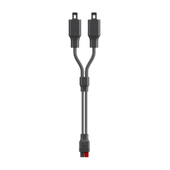















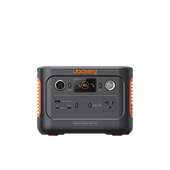

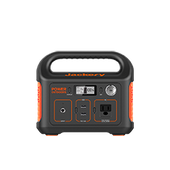



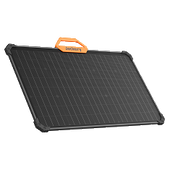






































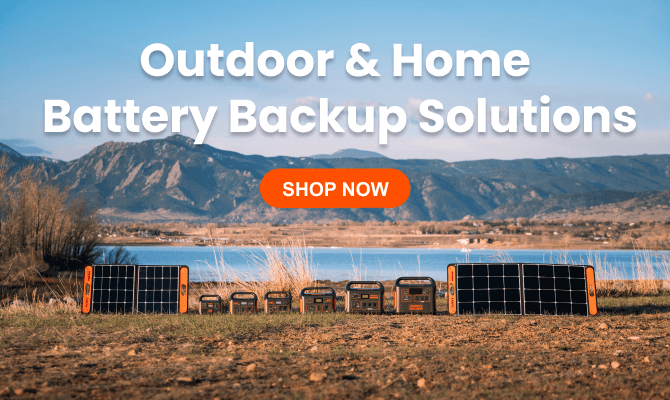
Leave a comment